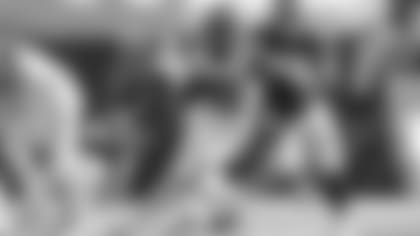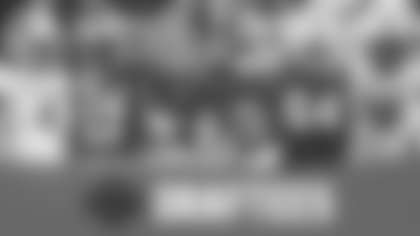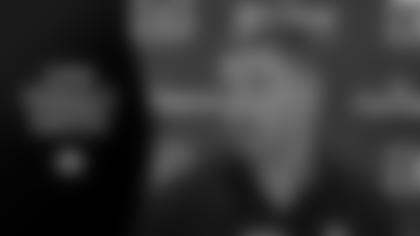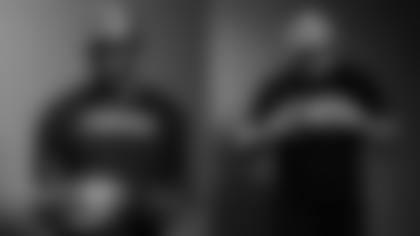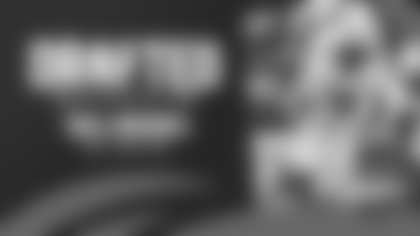As they put the finals strands of hay in the barn for next weekend with more than 300 virtual phone calls to prospects, the Bengals are Zooming into the homestretch of the most challenging NFL Draft since the advent of the laptop in the early 1980s.
Duke Tobin, the club's director of player personnel, has been in 26 of these things and says it has been the toughest draft for him to gather just the facts, ma'am. And it's been just as tough on two of his area scouts who have been alive for 28 drafts, Christian Sarkisian and Andrew Johnson.
"You don't have the same data points to compare people from previous years to this year," Sarkisian says. "But you find ways to make it work for you. We may not have as much detail as in years past, but we've probably covered it more broadly."
From closed college practices last fall, to players opting out of last season, to half the field of prospects not undergoing hands-on physicals, the pandemic has turned one of the most celebrated sports events of the information age into a treasure hunt for the bits and pieces that yield a sound scouting report.
Even in this Next Gen Stats era where numbers fly on the interstate of GPS, the traffic has slowed. With no NFL scouting combine offering uniform measurements, scouts and coaches have had to rely on the whims and wind of each individual campus workout.
"It's less standardized," says Mike Potts, the Bengals director of college scouting. "It's a little tougher, in my opinion, to heavily weigh the testing numbers and let that skew the grade too much. But then, it's always going to come down to the tape and what they are as football players and it always has."
But even then, there's not the same amount of game tape because so many seasons were cut so short last season. For scouts such as Steve Radicevic, the Bengals director of pro scouting who also works the parts of the west coast for the draft, that can make for an adjustment.
"To me, that means more depending on the position," Radicevic says of the opt-outs. "A wide out that showed you what he can do in 2019, I don't think it will be much of a difference. Not for the skill guys. You can easily see their athleticism. Linemen are a little more difficult. It's better to see them more recently. Linemen just develop differently year to year. Bodies change."
In his third draft with the Bengals, Sarkisian says he had to put more weight than usual on the pro days.
"I had to wait to validate what I saw on tape later in the process. That was just because I hadn't seen some of my guys in person," says Sarkisian, whose territory includes some Big 12 schools, as well as the Big Ten West. "Once I saw them in person, that helped me complete the picture."
Tobin says it's not ideal, but he reminds you that a lot of scouting is projecting whether a guy plays or not. And an opt-out isn't a non-starter.
"When you don't have current film to look at it can be problematic or it can leave you wanting to see a little more," Tobin says. "Those won't be decisions that we choose to not take a guy based on… it was a challenging year for everybody. Different conferences had different time schedules so everybody's situation was different.
"It's not going to be something that was a hard and fast decision point. We'll evaluate what's there to be evaluated and every player is a projection into the NFL no matter if they played this year or didn't play this year. You still have to project the traits onto your team and into the NFL."
Yet the biggest challenge of all may have nothing to do with football.
Try the medical.
Up until this year, all teams could put their hands on more than 300 prospects at the annual scouting combine in Indianapolis. That was pretty much the last thing the NFL staged 13 months ago before COVID shut things down for the 2020 draft.
But this year only 150 players were invited, those projected in the first three rounds and others with lingering injury issues. That's it. The teams' trainers and doctors are left to get information on the rest through the schools and there's been a lot of hurry up and waiting on scans and X-Rays.
"In some cases we're going to be going right up until the week of the draft to gather (medical) information," Potts says. "Some guys have been harder to get. Some schools may have 10 prospects scattered across the country. Guys are at different training facilities. We'll get what we need to make a good decision, it's just different."
Despite the challenges, the Bengals scouts are upbeat they've got everything covered. Tobin knows his people are coming off one of the league's more decorated drafts and are attacking it in the same manner with a raft of virtual interviews with prospects and extensive phone conversations with campus sources. And they didn't have the pro days like they did this year.
With everyone dealt the same hand, he's confident they can again have another strong draft.
For the second straight year they're adjusting to not being allowed to bring in 30 prospects to Paul Brown Stadium before the draft. In the past they've pretty much split that between players they're eyeballing in the first three rounds or so and non-combine players for whom they need physicals.
"We probably have a relationship with more players. We've interviewed more players than in a typical year," Sarkisian says. "It's not as detailed as bringing in a guy and spending time with him for 24 hours. But we have more information on the whole class."
And the virtual interviews are extensive. (Like last year, relentless senior defensive assistant Mark Duffner leads with 46 Zooms as he scours the defensive line and edge rushers.) Teams are allowed five one-hour virtuals with each prospect.
Potts would rather have those 18-minute in-person interviews at the combine because they bring in players at the same position in rapid fire and you can compare how you feel about players once they leave the room.
But he also says that much screen time is effective.
"The coaches can do a lot with that," Potts says. "While they're talking to them, they can put film up there, as well as Xs and Os, and it's almost like you're in the classroom with them."
The league is strict about it and Sarkisian logs all the Zoom interviews they conduct. But they can make as many phone calls as they want. The calls to the coaches and other college sources are replacing that invaluable time on campus during the fall that was wiped out. NFL scouts could only attend games and not practice.
Andrew Johnson the Bengals Northeast scout who also hits the mid-Atlantic and some Midwestern schools, has been working the phones for a year.
"The hardest thing about this year was the initial adjustment to not being on campus in August, September and October," says Johnson, working his sixth Bengals draft. "But, that helped me get better. I got better because it forced you to get information in a different way. I'll benefit from that in the long run.
"I started reaching out to college coaches in May and doing one-on-ones and I'm going to do that going forward. Mainly with the top guys."
Different path. Different tools. Different venues.
But the goal is the same. The draft is truly a story of heart.
"I think the trait that is probably overriding with all successful players is do they enjoy playing the game or do they play it for what the game brings them," Tobin says. "That's the tougher piece for a scout to uncover, is what motivates the guy. Does the game motivate them, does the competitive nature of the game motivate them, do they like performing or do they do it because they can. The ones that do it because they can are normally the ones who flame out earliest."



